Abstract
The spina bifida rate in Sweden from 1947 to 1981 has been studied using various sources of information, including two central computerised registers. During the period the rate approximately halved, but the decline was not smooth and occurred in three "waves." When the geographical location of high risk areas within each wave was studied, they were found to differ. The findings are discussed in the light of an environmental aetiology hypothesis of this malformation.
Full text
PDF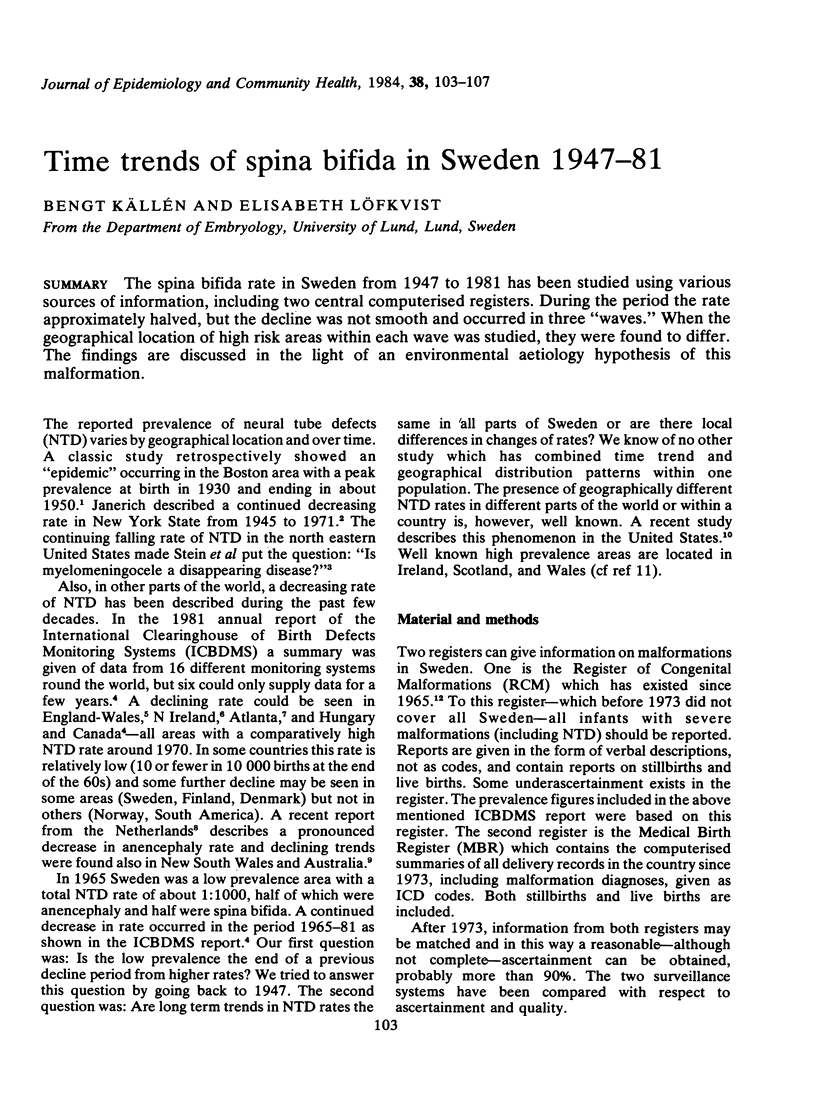
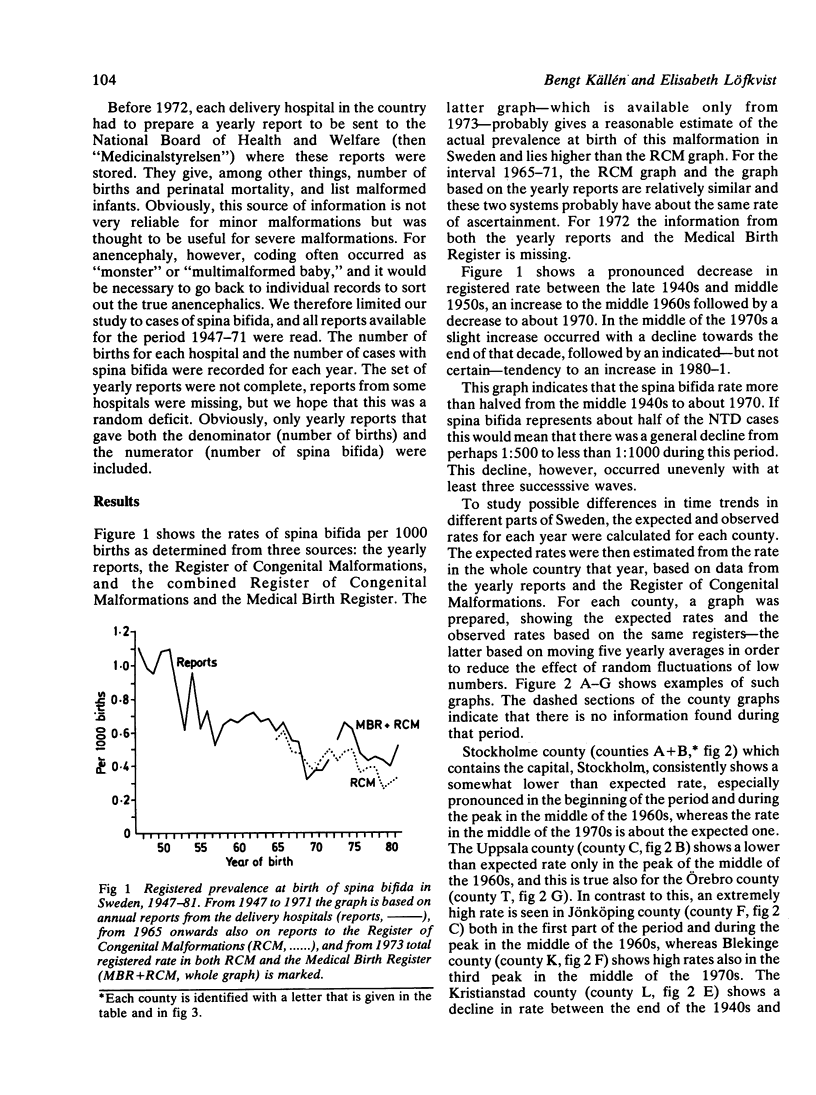
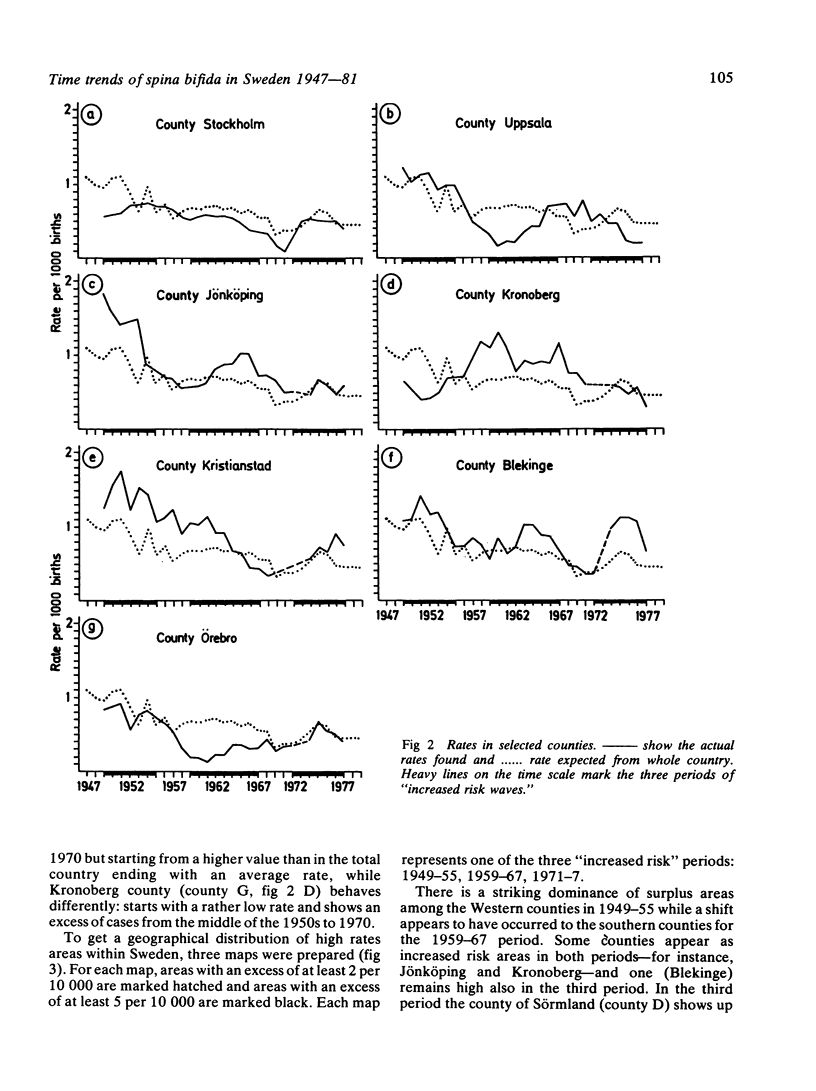
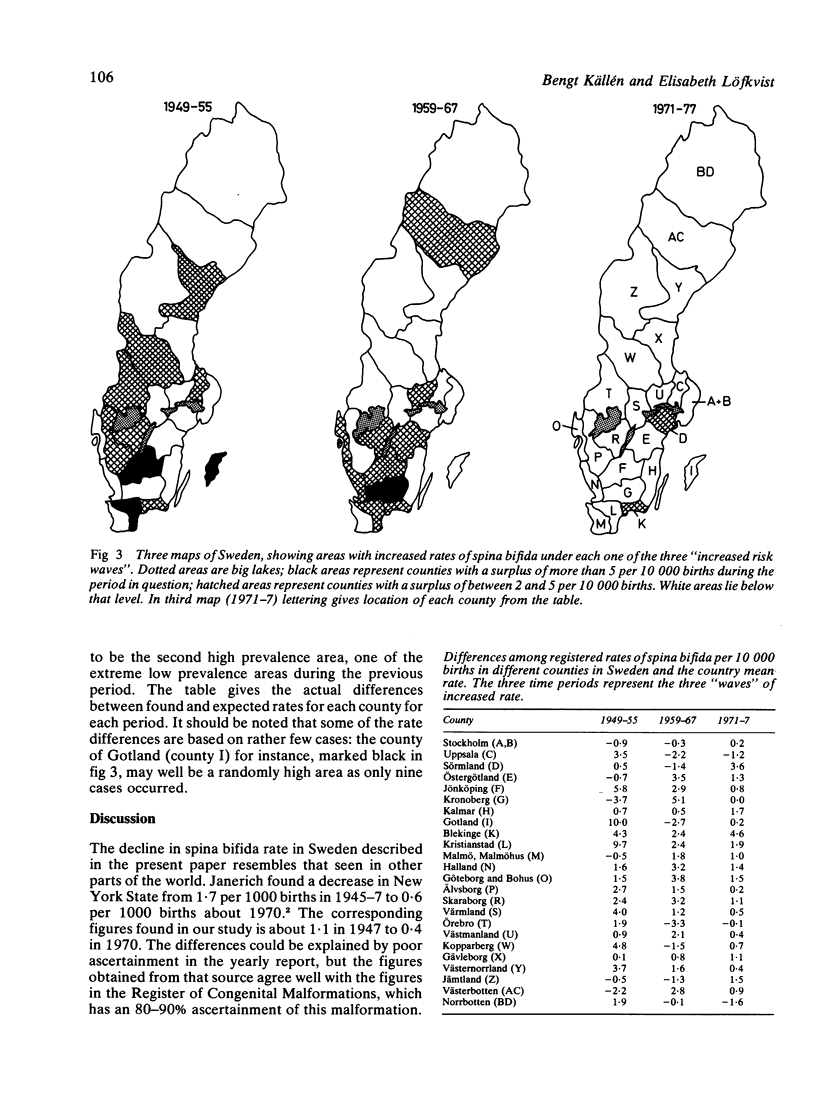
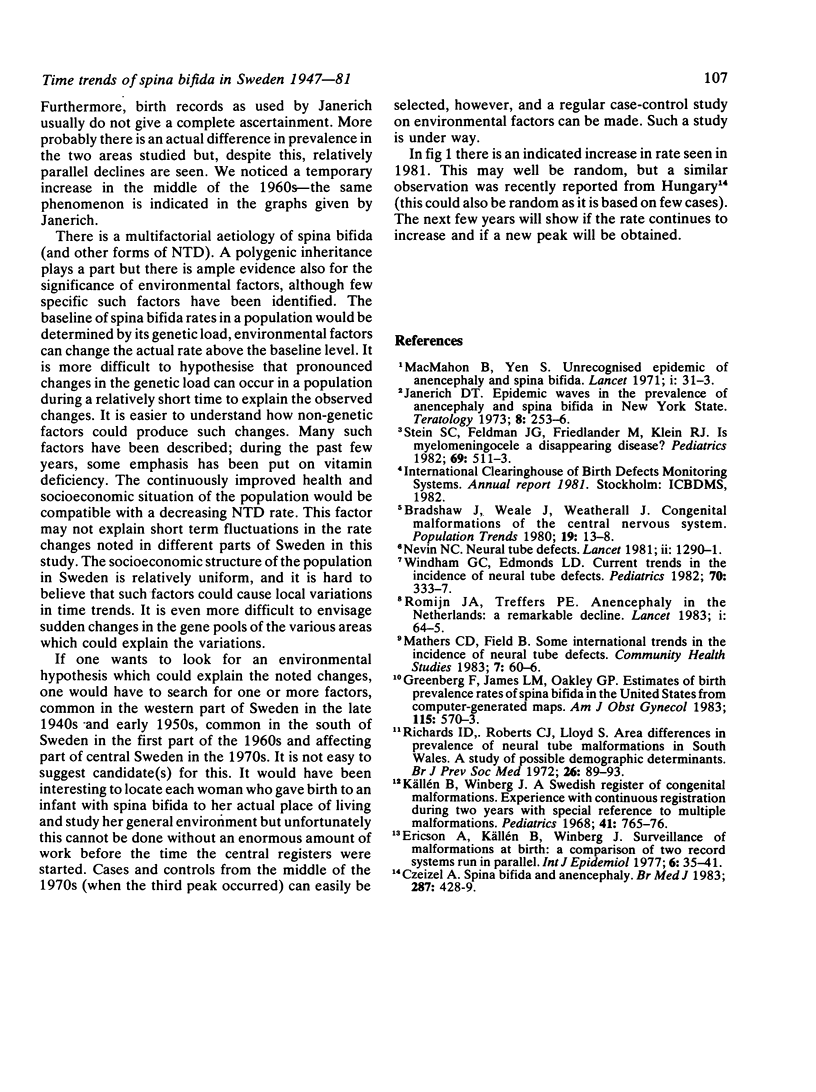
Selected References
These references are in PubMed. This may not be the complete list of references from this article.
- Ericson A., Källén B., Winberg J. Surveillance of malformations at birth: a comparison of two record systems run in parallel. Int J Epidemiol. 1977 Mar;6(1):35–41. doi: 10.1093/ije/6.1.35. [DOI] [PubMed] [Google Scholar]
- Greenberg F., James L. M., Oakley G. P., Jr Estimates of birth prevalence rates of spina bifida in the United States from computer-generated maps. Am J Obstet Gynecol. 1983 Mar 1;145(5):570–573. doi: 10.1016/0002-9378(83)91198-5. [DOI] [PubMed] [Google Scholar]
- Janerich D. T. Epidemic waves in the prevalence of anencephaly and spina bifida in New York State. Teratology. 1973 Dec;8(3):253–256. doi: 10.1002/tera.1420080304. [DOI] [PubMed] [Google Scholar]
- Källén B., Winberg J. A Swedish register of congenital malformations. Experience with continuous registration during 2 years with special reference to multiple malformations. Pediatrics. 1968 Apr;41(4):765–776. [PubMed] [Google Scholar]
- MacMahon B., Yen S. Unrecognised epidemic of anencephaly and spina bifida. Lancet. 1971 Jan 2;1(7688):31–33. doi: 10.1016/s0140-6736(71)80026-0. [DOI] [PubMed] [Google Scholar]
- Mathers C. D., Field B. Some international trends in the incidence of neural tube defects. Community Health Stud. 1983;7(1):60–66. doi: 10.1111/j.1753-6405.1983.tb00392.x. [DOI] [PubMed] [Google Scholar]
- Richards I. D., Roberts C. J., Lloyd S. Area differences in prevalence of neural tube malformations in South Wales. A study of possible demographic determinants. Br J Prev Soc Med. 1972 May;26(2):89–93. doi: 10.1136/jech.26.2.89. [DOI] [PMC free article] [PubMed] [Google Scholar]
- Romijn J. A., Treffers P. E. Anencephaly in the Netherlands: a remarkable decline. Lancet. 1983 Jan 1;1(8314-5):64–65. doi: 10.1016/s0140-6736(83)91592-1. [DOI] [PubMed] [Google Scholar]
- Stein S. C., Feldman J. G., Friedlander M., Klein R. J. Is myelomeningocele a disappearing disease? Pediatrics. 1982 May;69(5):511–514. [PubMed] [Google Scholar]
- Windham G. C., Edmonds L. D. Current trends in the incidence of neural tube defects. Pediatrics. 1982 Sep;70(3):333–337. [PubMed] [Google Scholar]


